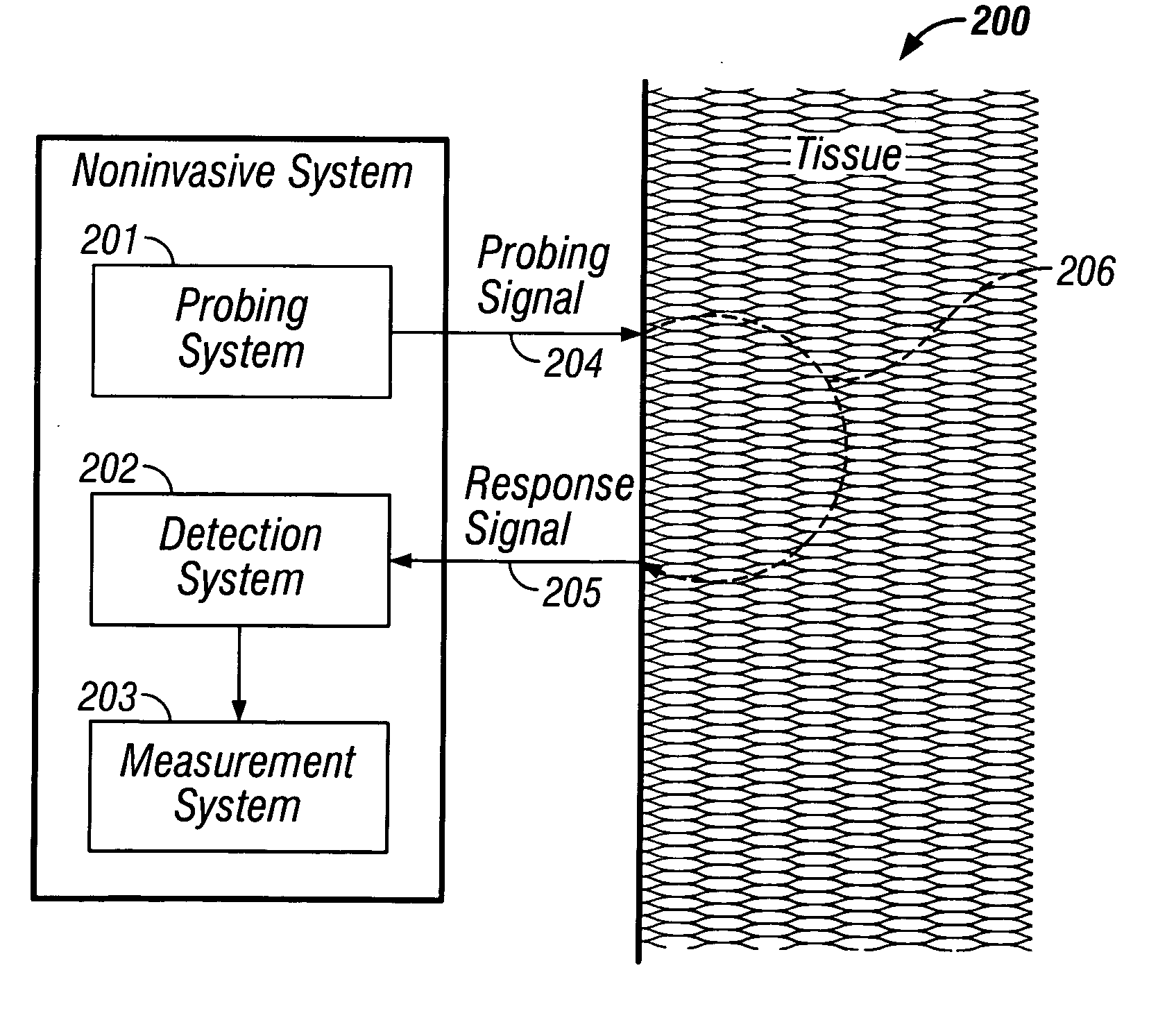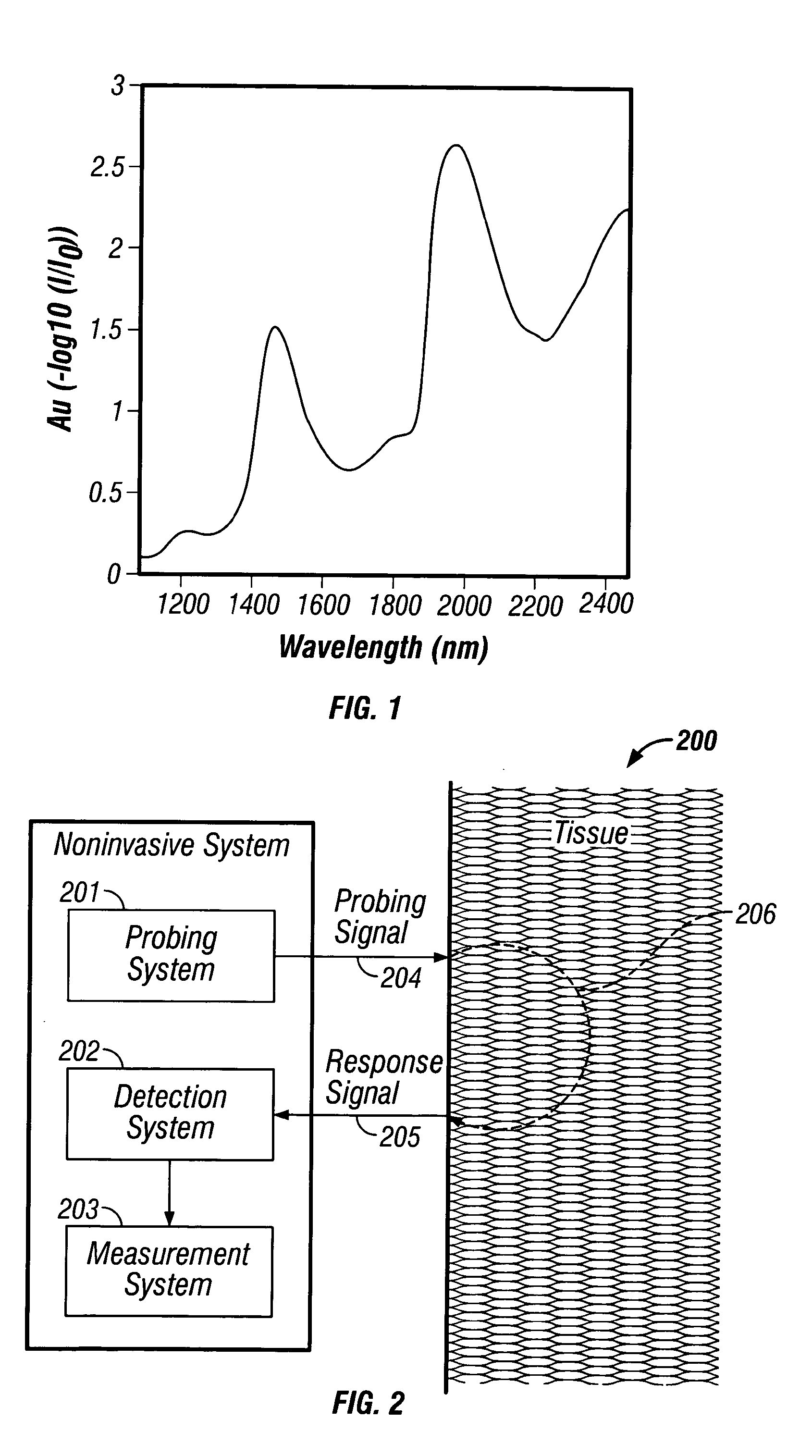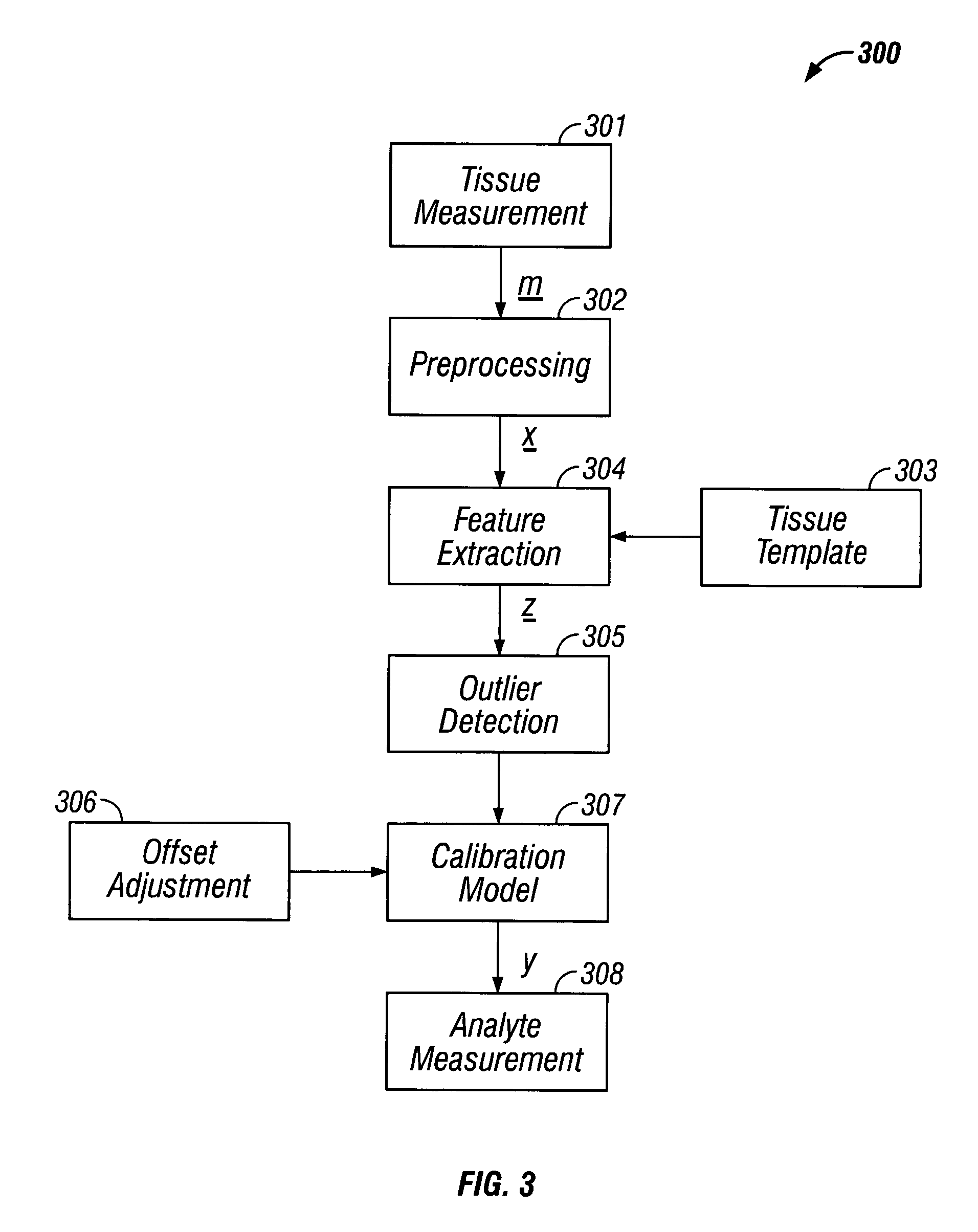Indirect measurement of tissue analytes through tissue properties
- Summary
- Abstract
- Description
- Claims
- Application Information
AI Technical Summary
Benefits of technology
Problems solved by technology
Method used
Image
Examples
fourth embodiment
[0117] Several different embodiments of the implanted system are provided herein. The first, a consumer version, is used for incremental or continuous applications requiring intensive analysis of body analytes (e.g., glucose). A particularly useful application is nocturnal monitoring of glucose and detection or prediction of hypoglycemic events. In the second, the system is employed in a health care facility and the analyte is monitored via a computer or health care provider. A third version utilizes the system to assist in the diagnosis of diabetes, impaired glucose tolerance, or hyperinsulinemia. the implanted system is for use in a closed-loop insulin delivery system. In this embodiment the system is a sub-component of an artificial pancreas and is used to monitor glucose levels for insulin dosage determination via an insulin pump.
[0118] As indicated above, a tissue measurement, m is passed from the detection system 202 to a measurement system 203. The measurement system 203 cons...
third embodiment
[0165] where y is the reference glucose concentration. In the third embodiment, when f(.cndot.) and g(.cndot.) are determined to be linear over the range of measurement, equation #6 reduces to:
=x.sub.pF-(m.sub.szG+m.sub.i)+b; (8)
[0166] where F.di-elect cons..sup.Nx1 and G.di-elect cons..sup.Mx1. In this embodiment, F and G are determined separately as described above using linear methods of calibration. This final realization of the supplemental use of features for glucose measurement is the preferred method.
[0167] In the second category of measurement, the extracted features are used to indirectly measure glucose through:
=(m.sub.sg(z)+m.sub.i)+b; (9)
[0168] where g: .sup.M.fwdarw..sup.1 is a model used to map the features to a variable correlated to the reference glucose level and m.sub.s and m.sub.i are slope and intercepts used to convert g(z) to the correct units. Determination of g(.cndot.) is through an exemplary set (calibration set) of tissue measurements, extracted features ...
second embodiment
[0174] In an alternate form of the second embodiment, the measurement of glucose is accomplished through utilization of a calibration set and a pattern matching system. First, a set of exemplary calibration data is established with samples consisting of both a spectral measurement, that are optionally processed and subjected to feature extraction as described previously, and an associated reference glucose concentration. The calibration set is formed by the collection of samples experimentally and / or an ongoing accumulation of samples from one or more devices. The preferred method of feature extraction, following preprocessing, is a factorial decomposition such as principal components analysis.
[0175] The measurement of glucose is performed through a pattern matching step involving comparison of the features associated with a new spectral measurement and the sample features contained in the calibration set. Generally, the pattern matching step consists of the determination of the sim...
PUM
 Login to View More
Login to View More Abstract
Description
Claims
Application Information
 Login to View More
Login to View More - R&D
- Intellectual Property
- Life Sciences
- Materials
- Tech Scout
- Unparalleled Data Quality
- Higher Quality Content
- 60% Fewer Hallucinations
Browse by: Latest US Patents, China's latest patents, Technical Efficacy Thesaurus, Application Domain, Technology Topic, Popular Technical Reports.
© 2025 PatSnap. All rights reserved.Legal|Privacy policy|Modern Slavery Act Transparency Statement|Sitemap|About US| Contact US: help@patsnap.com



